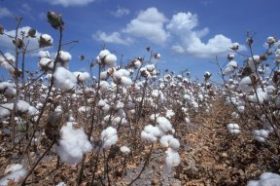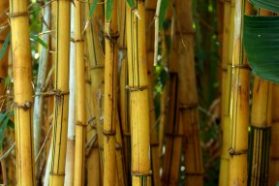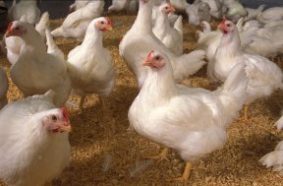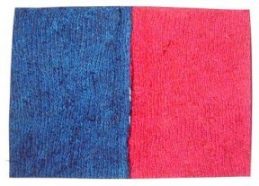Earth-friendly fabrics
Shirts made from bamboo, socks made from corn, and jackets made from chicken feathers may be in your fashion future.
By Emily Sohn
Shopping for clothes involves tricky decisions about fit, color, style, and price. And if a growing number of companies have their way, you’ll soon start checking labels for another key detail: environmental impact.
 |
|
Clothes made from Earth-friendly fabrics may soon hang in your closet.
|
| iStockphoto.com |
Earth-friendly fabrics are in. It’s already possible to buy shirts made from bamboo and socks made from corn. Shopping malls of the future might also carry clothes made from chicken feathers or rice straw.
The companies that make such fabrics are interested in sustainable development. This means trying to provide things that people need while protecting natural resources and preserving biodiversity.
“A fully sustainable business would be one that creates no negative impact on the environment,” says Gordon Rands. He’s an environmental business expert at Western Illinois University in Macomb. “I don’t think [such a business] exists yet, but theoretically it’s very possible. And companies are moving in this direction.”
So, scientists are now looking for new ways to make fabrics for clothes that are good both for your image and for Earth.
Born in the lab
Making clothes and shoes traditionally involves harsh chemicals and lots of energy.
Some fabrics, such as cotton, leather, and wool, begin as plants or animal parts. But that doesn’t mean they’re gentle on the environment. Cotton plants, for instance, are often smothered with noxious chemicals to keep away bugs and weeds.
 |
|
These plants produce cotton fibers.
|
| Photo by David Nance, USDA Agricultural Research Service |
Other fabrics are born in laboratories, where scientists create molecules called polymers and make synthetic (human-made) materials. Polyester, for example, is made from a polymer called polyethylene terephthalate (PET), which can be molded into soda bottles or drawn out into long, thin threads. Textile companies weave or knit PET threads into fabrics that are remarkably silky, sturdy, and quick to dry.
The problem, from an environmental viewpoint, is that most synthetic fibers are made from petroleum, which must be extracted from the ground. Accessing, transporting, and processing oil is expensive, and the supply is limited. Still, petroleum-based materials appear in exercise clothes, shoe soles, plastic zippers, buttons, dyes, and thousands of other products.
To overcome this reliance on petroleum, some companies have experimented with creating polymers from substances such as corn sugar, then weaving the resulting threads into fabrics. Other companies have developed products from recycled materials.
Efforts to use recycled materials, however, haven’t always been successful. In the 1990s, for example, recycled fleece came and went, mostly because the resulting clothes were scratchy and flimsy.
 |
|
Bamboo pulp, extracted from bamboo stalks, can be made into a soft fabric. Bamboo grows quickly and does not usually require the use of pesticides to thrive.
|
| iStockphoto.com |
Now, however, advances in technology have made it possible to convert a larger variety of old plastic bottles and worn clothes into much thinner threads that make more comfortable recycled clothes. Likewise, a new type of finely woven organic cotton is soft, yet chemicalfree.
Clothes from waste
In the past few years, textile scientist Yiqi Yang of the University of Nebraska in Lincoln has figured out how to make yarn out of cornhusks, chicken feathers, and rice straw (part of the rice plant). All three are agricultural by-products that usually end up in the trash.
 |
|
Yarn made from chicken feathers could be woven in fabrics that wear like wool.
|
| Photo by Stephen Ausmus, USDA Agricultural Research Service |
“We already have a problem with how to get rid of [these waste products],” Yang says. “Instead, let’s use them to make beautiful materials.”
The process involves chemical reactions that break down the raw materials into fibers, followed by cleaning. The scientists then spin the fibers into yarn, which they use to make fabrics.
On the basis of chemical analyses of the resulting fibers, Yang predicts, rice-straw and cornhusk fabrics will resemble linen or cotton. And chicken-feather fabrics, still in the early stages of research, will wear like wool.
Chicken feather fibers are unusual, Yang says, because they are very light and they contain lots of small air pockets arranged like a honeycomb. “That means,” he says, “it will be very warm if you use it to make a jacket or sweater.”
 |
|
This knitted, dyed fabric is made from 50 percent rice-straw fiber and 50 percent cotton.
|
| Courtesy of Yiqi Yang |
Clothes made from farm waste are still years away from hitting the stores, but clothes made from organic or recycled fabrics and products made from coconut, bamboo, and corn sugar are already available in many places.
Simply by choosing carefully how you get dressed in the morning, you can help decide Earth’s future.
Going Deeper:







